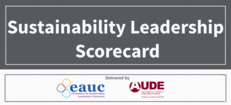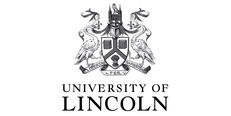University of Lincoln shares their experience of using the Sustainability Leadership Scorecard
What was pivotal in you securing senior management authorisation to use the Sustainability Leadership Scorecard (SLS)?
Rather than taking this to Senior Management before trialling the SLS, the Environment Manager completed a first draft of the SLS over the course of around 2 months, working with representatives from a number of departments within the University. After having completed the SLS, we then took the results to our Environment and Sustainability Committee and presented the diagrammatic format of the results and talked through the areas of the organisation that had been shown as being stronger/weaker. This was well received and the visual representation has been particularly helpful when giving updates to management on our progress.
What was your approach to completing the Sustainability Leadership Scorecard?
The approach was led by the Environment Manager as ‘owner’. I was able to complete a few of the sections myself, using knowledge and information already gathered by the environment team. Rather than complete the whole SLS independently however, I reached out to colleagues and requested their support for those sections where the Environment Team was not the lead, e.g. procurement, resilience, teaching and learning.
Did you encourage colleagues from other Departments to participate and help you with the Sustainability Leadership Scorecard?
For most of the sections, further stakeholder engagement was required so I reached out to colleagues across the institutions and asked them for a meeting to discuss the SLS and integrate their expertise. These were fairly short semi-structured conversations – outlining the SLS and what we were hoping to achieve by using it (an overview of the extent to which sustainability was embedded across the organisation) and asked for their help.
For example, I met with the Engagement and Wellbeing manager, based in HR, to talk about health and wellbeing activities offered by the University. She was interested to draw the link between the work that team does and how this contributed to overall sustainability outputs; so the semi-structured nature of the conversation, based round the questions on the scorecard helped to facilitate a different kind of conversation around sustainability-related engagement.
I also met with others such as those in the Planning department around Corporate Risk and how Climate Adaptation was incorporated into strategic planning. This again resulted in some further follow up conversations about climate adaptation and flood risk remediation, for example.
What are the 3 top benefits of using the Sustainability Leadership Scorecard?
- Helpful visual summary of the areas of our organisation that have more successfully embedded sustainability
- Highlighting the areas where more focus is needed to truly embed sustainability, which will prompt targeted engagement with particular departments and stakeholders
- Ability to benchmark with other organisations and seek support from a third party when required
You can also hear about our approach to the SLS here








 Except where otherwise stated, content on this site is
licensed under a Creative Commons Attribution 3.0 License.
Except where otherwise stated, content on this site is
licensed under a Creative Commons Attribution 3.0 License.
